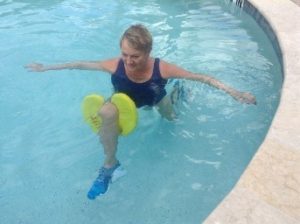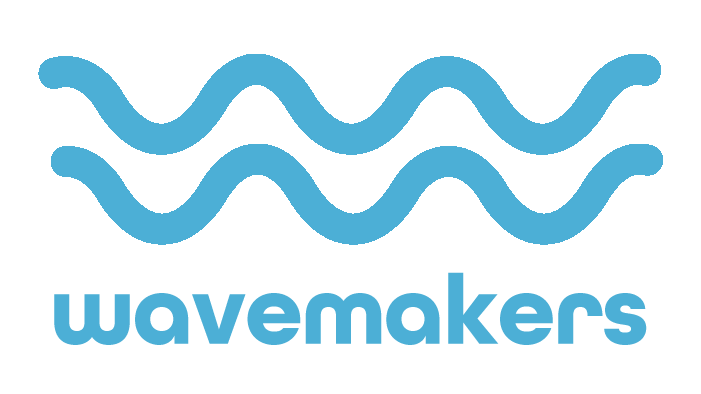Sore back, knee or shoulder pain? Having the ability to move the body in all 6 natural directions – front to back, right to left and rotation right and left – helps the body stay mobile and strong. However, when any joint is overused or not used enough, in any of these directions, problems arise.
It’s kind of like my Silver Bullet (that’s my car). Built in 2001 and having 350,000 km (that’s 215,000 miles) it’s showing signs of both over- and under-use. Over the last 15 years, the leather interior is starting to crack and break down in high traffic areas. On the other hand, without regular use, the mechanical structures of the back windows have dried out, hardened and no longer work to roll the windows up and down.
What to Expect in “Hip Senior Exercises in More Directions”
In this workshop, we’ll first establish how tight and weak hips contribute to low back, shoulder and knee pain. Next we’ll explore the significance of these body connections and learn a simple strategy that moves the hips in 6 directions for whole body results.
Let’s apply this thinking to a leg swing. This exercise can mimic all natural hip motions by swinging the leg front to back, right to left and rotating right and left. Supported by buoyancy, even with poor balance or having difficulty moving, this exercise is a comfortable way to improve hip function.
As you do a leg swing keep these things in mind:
- Soften the knee and hip on the standing leg
- Sink deep into the standing leg
- Keep a slight bend in the moving leg
- Relax the shoulders
- Use your arms to scull for balance
- Move in a comfortable range and at a steady pace
What are You Looking for?
Not only will you learn how to expand your exercise library but also what to look for to help your students perform the moves better!
Even with a deficiency in mobility or strength, the body has a skilled ability to seek out and find a way to get it done. In the example of the leg swing, some of the more common “cheats” include:
- Externally rotating the standing leg (toes pointed out)
- Rocking the body as the leg swings
- Turing the head along with the moving leg
These are just a few of the ways the body compensates for limited hip mobility, poor strength or an inability to isolate movement at the hip. To help resolve these issues, all you need to do is move the hip in 6 directions. You will be amazed at how this simple concept really works!
“Everyone that has joined me in implementing the 6 directional exercises said how much better they feel afterward. They are seeing marked improvement in balance, range of motion and pain level. What a blessing!” – Carla Bigelow, AEA Professional
Proven Results
Carla Bigelow, Aquatics and Fitness Manager in Anacortes, Washington, works with elite athletes, weekend warriors and seniors. She shares her experience using this 6 directional approach:
“I have been using your exercises with my water exercise classes. My patrons were skeptical at first but soon were staying after class to do them on their own on days I didn’t include them. Today a long time patron, who has struggled with hip pain and the resulting awkward gait said this, ‘Carla, these exercises are great. For months I have been in pain and walking like a penguin. Today I walked normally and my hips don’t hurt!’”
Corrective Exercises
Let’s explore a couple exercises that can be used to help improve ability to do a leg swing.
- Solving Cheat #1 – Poor Mobility
If the foot continues to turn out, the body may be trying to stabilize due to lack of mobility. Try exercises to stretch the hip flexors, adductors or internal rotators. Here’s an example of an exercise targeting the hip flexors:
Lunge with Arm Swings
Place a Nekdoodle® (see below) or noodle under the front leg just above the knee so the leg is suspended in front of the body. This positioning helps increase hip extension of back leg. Holding the body in the lunge position takes the arms through a swinging motion in all 6 directions reaching:
- Anterior (surface) to posterior (floor)
- Right and left lateral (pendulum swing)
- Right and left rotational (at surface)

As you go through the exercise, here are some tips to help coach your students:
- Heel is lifted on the back foot (use toe as anchor)
- Gently squeeze glutes so hips remain facing forward
- Reach the arms in the biggest comfortable range during the first two sets, and then keep it smaller during rotation
- Feel the stretching on the front of the hip on the back leg
- Move at a slow and steady pace
- Solving Cheat #2 – Poor Strength
If you notice the body rocking, this might be due to due to poor hip strength causing the body to rely on the trunk and/or upper body to help move the leg. If you’ve attended lectures with Dr. Len Kravitz you’re probably aware of the global epidemic, “glute amnesia.” Although we may not think about muscles “forgetting how to engage,” it’s a reality that affects many. Stay tuned for my blog next week where I’ll share a glute activation exercise!
Teaching Sequence
Gary Gray teaches, “the exercise is the test, and the test is the exercise.” In our example of the leg swing, this movement is both the exercise and the test. What this means is, when you teach an exercise, it becomes a “test” as you study student response and try to help them improve.
Here is the teaching sequence:
- Teach the exercise. In this case, it’s the leg swing. Use the coach tips provided earlier.
- Observe student response. Remember, the two key things to watch for include: Do the toes remain facing forward or do they turn out? Is the body rocking as the swinging leg moves?
- Try the flexibility and strength-focused exercises – lunge with arm swings and isometric glute activation exercise.
- Repeat the leg swing. Improvements may take a few weeks, but are sometimes immediate!
Whether you teach group exercise or work with clients one to one, all you need to remember is to move in more directions! This simple strategy can help you upgrade familiar exercises as well as develop hundreds more.
Learn my follow-the-feel approach and get meaningful and lasting results from your workouts with me as your coach – join WECOACH Workouts.
